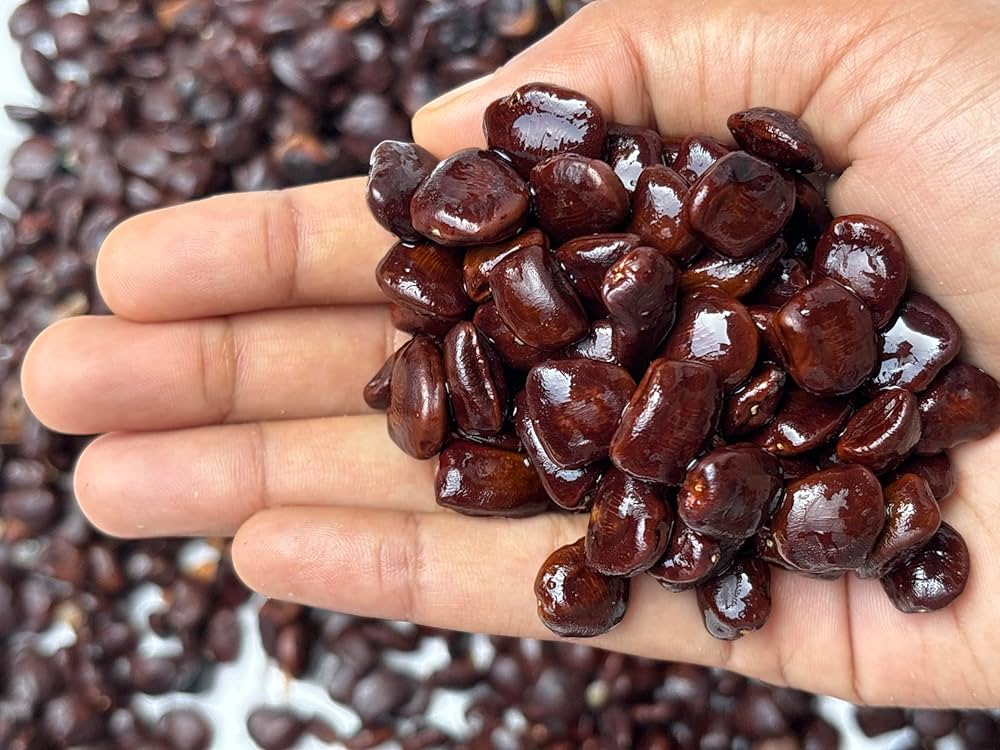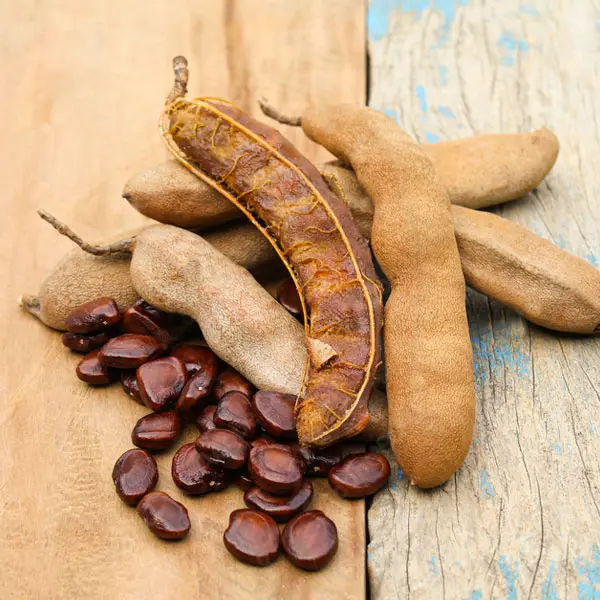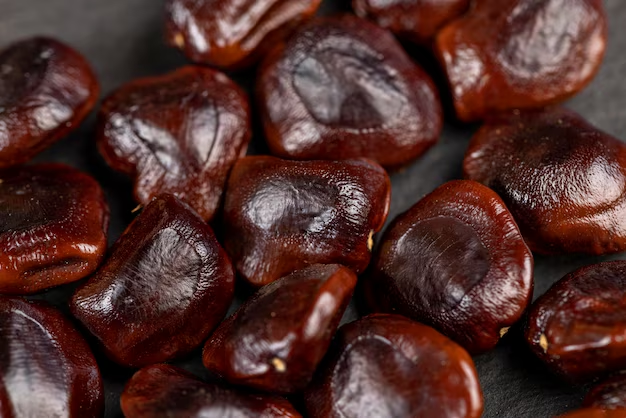INTRODUCTION:
Tamarind (Tamarindus indica L.) is a tropical fruit-bearing tree widely cultivated in Asia, Africa, and Latin America. While the pulp of tamarind is commonly used in culinary, medicinal, and industrial applications, its seeds, which make up about 30–40% of the fruit’s weight, are often discarded as waste. However, recent studies have revealed that tamarind seeds are a valuable by-product rich in nutrients and bioactive compounds.Tamarind seeds are hard, glossy brown, and composed mainly of carbohydrates (especially polysaccharides), proteins, and phenolic compounds. The seed kernel contains tamarind seed polysaccharide (TSP), which has gained attention for its potential use in food, pharmaceutical, textile, and cosmetic industries due to its gelling, thickening, and stabilizing properties.

Hindi – Imli ke beej.
Tamil – Puli vithai.
Telugu – Chintapandu ginjalu.
Kannada – Hunase beejagalu.
Malayalam – Puli vithu.
Marathi – Chinche biya.
Gujarati – Aamlina beej.
Bengali – Tentul bij.
Urdu – Imli ke beej.
Punjabi – Imli de beej.
Odia – Tentuli bia.
Sinhala – Seembala beeja.
HEALTH BENEFITS:

Reduces joint pain:
The anti-inflammatory properties of tamarind seeds can help alleviate joint pain, swelling, and stiffness, offering potential benefits for those with arthritis.
Supports digestion:
High in dietary fiber and natural enzymes, tamarind seeds can promote healthy digestion and help relieve issues like constipation, bloating, and indigestion.
Promotes heart health:
Antioxidants in the seeds can help lower “bad” (LDL) cholesterol and raise “good” (HDL) cholesterol. The high potassium content also helps manage blood pressure.
blood sugar:
Studies suggest that tamarind seed extracts can help lower and regulate blood sugar levels, potentially by improving insulin sensitivity.
Boosts immunity:
The antibacterial, antifungal, and antiviral properties of the seeds can help strengthen the immune system and protect against infections. They are known to boost white blood cell activity.
Enhances skin health:
Tamarind seed extracts contain hyaluronic acid, which helps moisturize the skin and reduce the appearance of fine lines. Their antioxidant properties also protect against sun damage and premature aging.
Fights bacteria:
The seeds have antibacterial properties that can help protect against various infections, including those affecting the intestinal and urinary tracts.
Improves eye health:
In traditional medicine, juice from the seeds is used in drops to treat conjunctivitis and other eye infections. Research shows promise in using tamarind seed extract in eye drops for dry eyes.
Antioxidants:
The seeds are packed with powerful antioxidants, including flavonoids and polyphenols, that help combat oxidative stress and inflammation.
Polysaccharides:
The kernel is a source of tamarind seed polysaccharide (TSP), a valuable compound used in the food and pharmaceutical industries as a gelling and emulsifying agent.
SIDE EFFECTS:

Gastrointestinal issues:
Overconsuming tamarind seeds can cause stomach upset, bloating, cramps, or diarrhea due to their high fiber content.
Acidity and heartburn:
Tamarind’s acidic nature can trigger acid reflux or heartburn, especially for people with sensitive digestive systems.
Dental erosion:
The high acidity from excessive tamarind can erode tooth enamel over time.
Blood thinners:
Tamarind can act as a natural blood thinner. If you are taking anticoagulant medications such as aspirin or warfarin, consuming tamarind could increase your risk of bleeding.
Individuals with sensitive stomachs:
People with gastrointestinal issues like acid reflux or gastritis may experience worsened symptoms.
HOW TO USE:

Roasted Tamarind Seeds (Snack Method)
Ingredients: Tamarind seeds, salt (optional), spices (optional)
Steps:
Clean the seeds: Remove the hard outer shell. You can crack it using a nutcracker or lightly roast to loosen it.
Remove seed coat: Soak seeds in water for a few hours to make peeling easier.
Roast seeds: Dry roast in a pan on medium heat for 10–15 minutes until crunchy.
Season (optional): Sprinkle salt or spices like chili powder or chaat masala.
Cool & eat: Enjoy as a healthy, protein-rich snack.
Tamarind Seed Powder (Cooking/Thickener)
Steps:
Clean and peel seeds as above.
Dry the seeds: Leave them in the sun or use a dehydrator until fully dry.
Grind into powder: Use a blender or spice grinder.
Use in dishes: Add 1–2 tsp to soups, stews, or curries as a thickener or to enhance flavor.
Tamarind Seed Paste (For Cooking or Skincare)
Steps:
Boil seeds: Boil 10–15 seeds in water for 30–40 minutes until soft.
Peel seeds: Remove the seed coat.
Grind into paste: Blend with a little water until smooth.
Use:
Cooking: Add to sauces or curries.
Skincare: Mix with honey or yogurt for a natural exfoliating mask.




